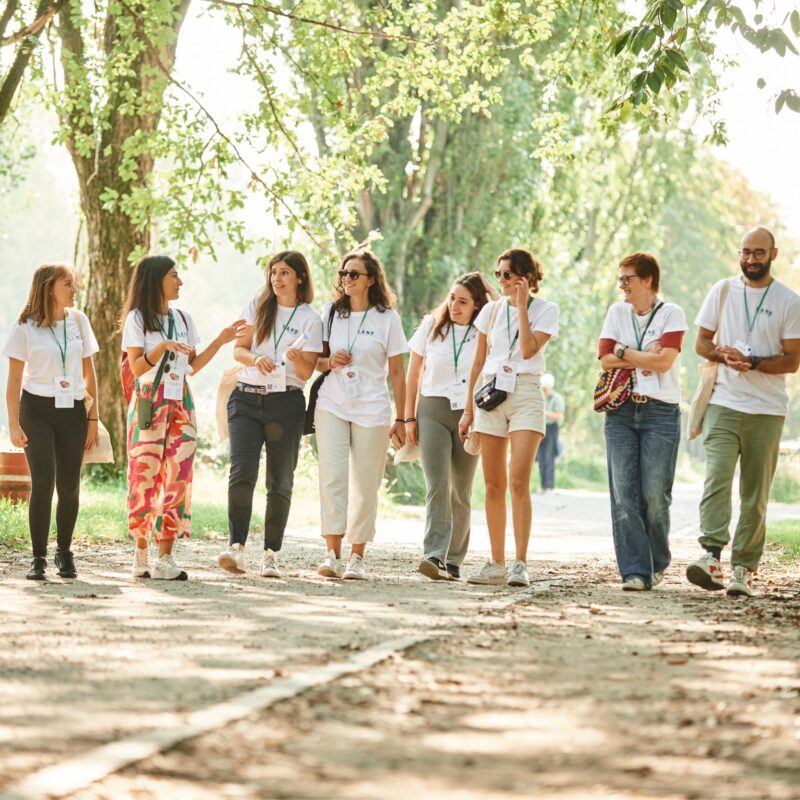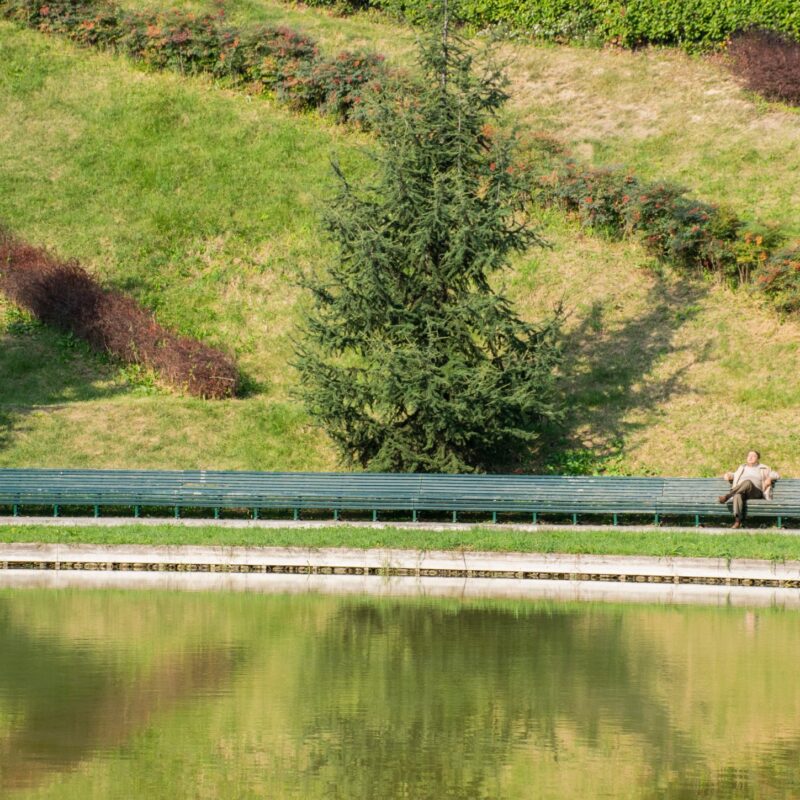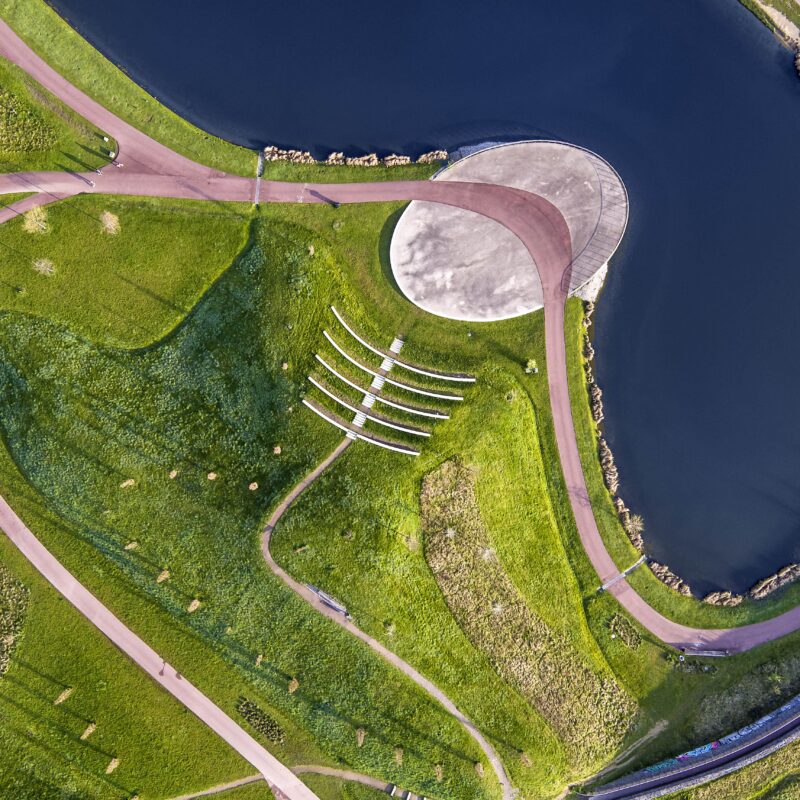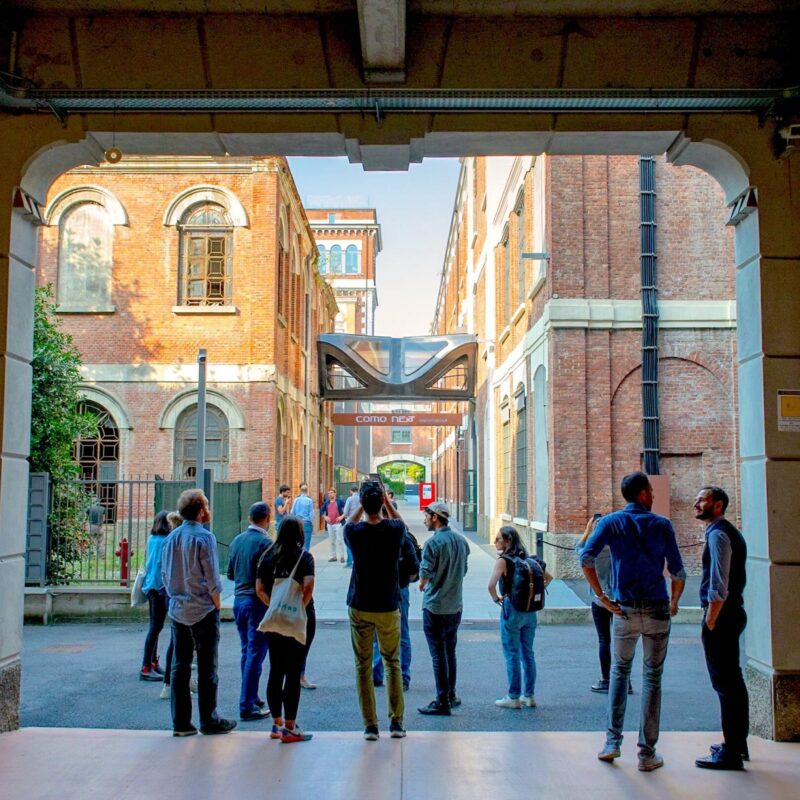
Ascoli Piceno, LAND Italia presents the strategic master plan for the landscape enhancement of the area of the former SGL Carbon plant
On Friday, May 31, at 2:30 p.m., architect Shirly Mantin illustrated to the authorities and the public the project for the environmental regeneration of the 24-hectare area occupied by the old production site.
A green heart for Ascoli Piceno, dotted with 2,500 new trees. LAND Italia will create it for Restart Srl, with the broader aim of regenerating and enhancing the entire disused industrial area of the former SGL Carbon, with a view to reconnecting the city and its community with nature.
On the afternoon of Friday, May 31, architect Shirly Mantin, Director and Partner of LAND Italia, presented the strategic master plan for landscape enhancement to the public and authorities, including the Mayor of Ascoli Piceno Marco Fioravanti, Undersecretary at the Ministry of Economy and Finance, Hon. Lucia Albano, the Government’s Extraordinary Commissioner for the repair and reconstruction of the 2016 earthquake, Sen. Guido Castelli, and the Government Commissioner for landfill remediation, General Giuseppe Vadalà.

A scaled photomontage of a playground area in Ascoli Piceno (image: LAND)
The project is articulated along three guidelines for enhancement, aimed at transforming the former plant, a symbol of industrialization and the economic boom of Ascoli, into a true “factory of nature.” From environmental and landscape aspects to those related to urban and social regeneration, up to the protection of the historical memory of the place, the master plan intends to preserve some identity elements of the old production site, transforming them into iconic landmarks capable of keeping its memory and value alive.
Regeneration begins with the restoration and improvement of the environmental quality of the area and the natural habitats along the Tronto River, through a 24-hectare ecological network capable of restoring biodiversity and promoting long-term resilience for the well-being of present and future generations. Innovative and sustainable solutions to address the degradation problems due to the long production cycle of the SGL Carbon site, closed in 2007. The city’s cardo and decumanus become the guiding principle of the master plan, aimed at restoring connections with the historic center, its services, and the various poles of the territory, thanks to the inclusion in the area of functions and infrastructural enhancements capable of enhancing the socio-cultural aspects of Ascoli Piceno and at the same time increasing the attractiveness of the place. Conscious management of the site will foster its development with a focus on research and innovation.
“The river landscape of the Tronto will be the new attraction for the community of Ascoli Piceno,” says Andreas Kipar, project leader and CEO of LAND. “The regeneration of this disused industrial area, endowed with a strong historical identity, will add new value to the city thanks to the implementation of green spaces and areas for public use for sharing and cultural activities. Combining resilience and inclusiveness, continuity and usability, the master plan aims to rediscover for residents and visitors the rusticity of a widespread and productive nature.”

Masterplan from above of Ascoli Piceno (image: LAND)
The strategic master plan for landscape enhancement follows on from the safety work on the “first rain basin” launched last September under the supervision of the Government Commissioner for landfill remediation, General Giuseppe Vadalà, and the Sole Responsible of the Procedure, Eng. Giovan Battista Pasquariello.
In recent months, a collaborative phase was initiated, managed by the Participatory Design Forum promoted by Legambiente and Bottega del Terzo Settore, which led to the presentation by architect Mantin of the Parco del Tronto, a green area of about 3 hectares dotted with over 370 trees, which will soon rise along the riverbank as a driver of the regeneration process of the disused area.
This is just the first step of an active participatory process essential for effective urban regeneration, where citizens and associations living in the city and the needs of the entire territory become the main actors of the transformation.









